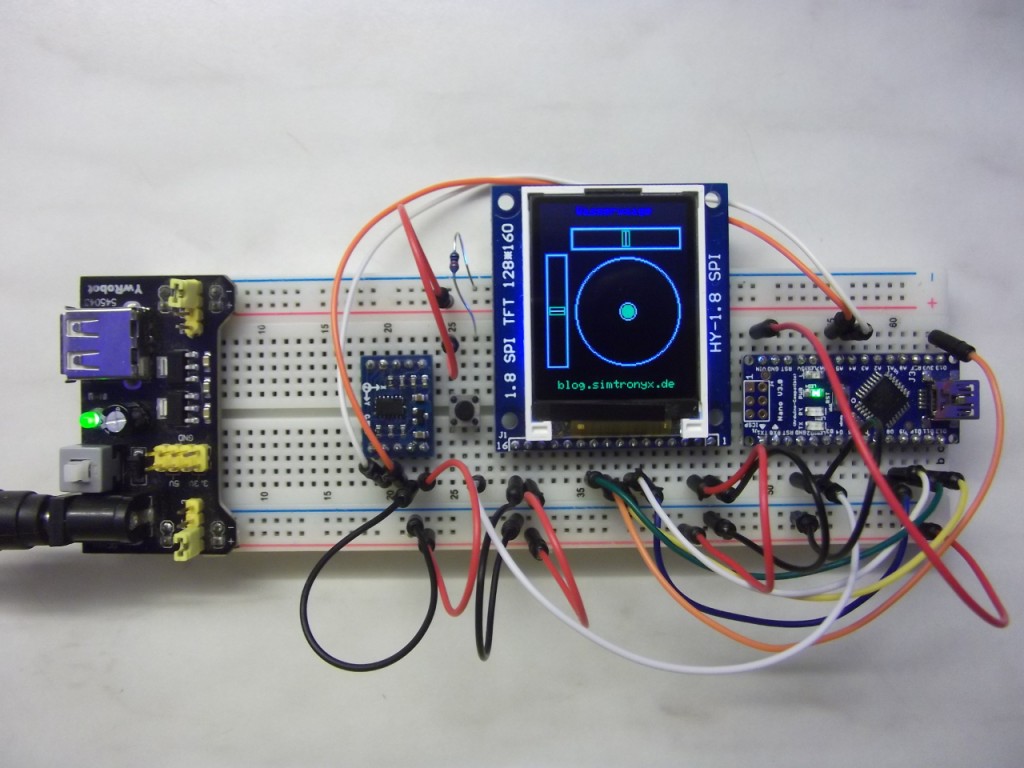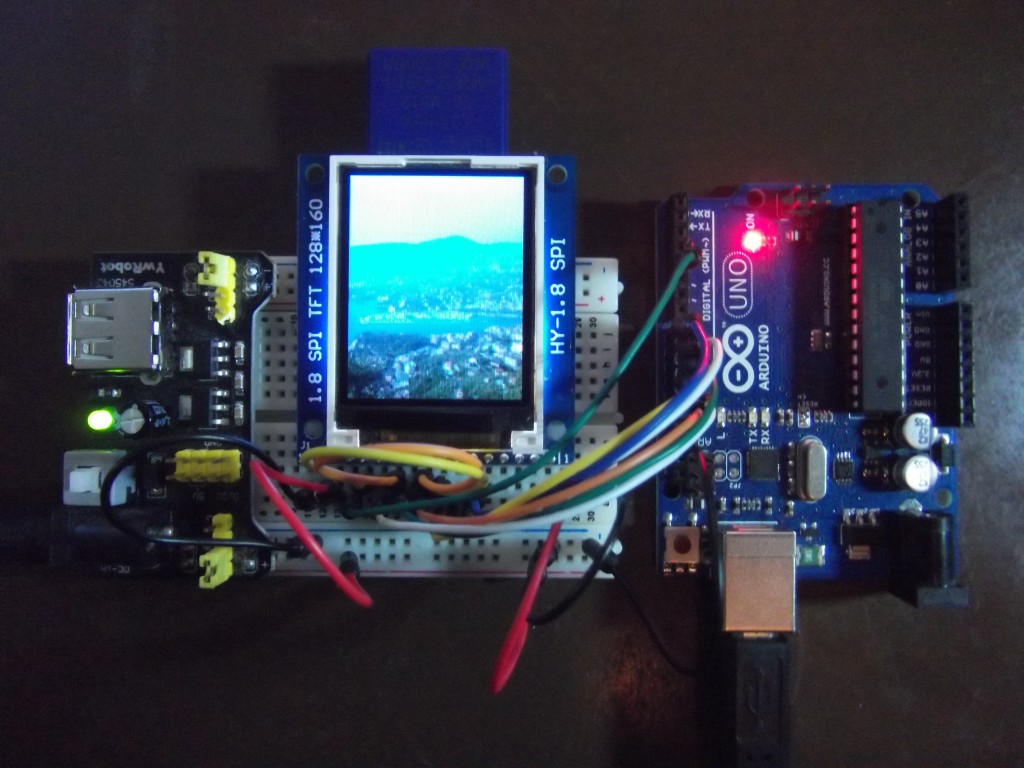Today we build a spirit level with the help of the acceleration sensor ADXL345, an Arduino, a TFT-Display (HY-1.8 SPI) und some other parts.

Digital spirit level: ADXL345, TFT (HY-1.8 SPI) and an Arduino
Today we build a spirit level with the help of the acceleration sensor ADXL345, an Arduino, a TFT-Display (HY-1.8 SPI) und some other parts.

Digital spirit level: ADXL345, TFT (HY-1.8 SPI) and an Arduino
In this tutorial we use our Arduino to show an image slideshow on a 1.8 inch tft module with SD card support (HY-1.8 SPI). We will change the size and the format of the images and copy them to the SD card. After that the Arduino loads them from the card and shows them on the display.

Image slideshow with an Arduino on a 1.8 inch tft display (HY-1.8 SPI)
To be a little entertained when tinkering, we build us today a small FM stereo radio using a slightly older, but extremely inexpensive, TEA5767 breakout board. However, by this time it will be a little more complicated because we need to solder and have to build some adapters.
Today, we build us an animated and programmable mood lamp that can be nicely used as a functional decoration. This tutorial is understood only as a suggestion, especially the design of course is always in the eye of the beholder.
To give our Arduino the chance to tell sometimes what’s actually going on and do not always use the serial monitor, it is time to buy him a small display. Fortunately, there is a wide range of available shields and breakout boards. In this case, we use a 1.8 inch TFT color display with 128×160 pixels (HY-1.8 SPI, the name on the board), equipped with an SPI interface, which gives us the opportunity compared to displays with parallel interface, to have more free ports for other applications available.
As a quasi-nostalgic relic of an almost extinct generation of cell phones we use today, the Nokia 5110 LCD screen from the cellular phone with the same name, kindly as a breakout board for a small budget. Because the display operates at 3.3V, we use it together with a 8MHz clocked Arduino Pro Mini, which also runs at 3.3V.